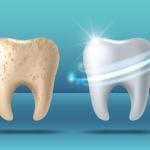Biomimetic dentistry represents a paradigm shift in dental science, integrating principles from biology and engineering to emulate the natural form and function of teeth. By mimicking the structural and functional aspects of natural teeth, biomimetic dentistry aims to enhance restorative dental procedures, ensuring that treatments are not only aesthetically pleasing but also functionally durable and biologically harmonious.
The Concept of Biomimicry in Dentistry
Biomimicry, derived from the Greek words “bios” (life) and “mimesis” (imitation), involves emulating nature’s models, systems, and elements to solve human problems. In dentistry, this concept translates to designing dental materials and techniques that replicate the natural properties of teeth. The goal is to restore teeth to their original strength, functionality, and appearance, while preserving as much of the natural tooth structure as possible.
Principles of Biomimetic Dentistry
Biomimetic dentistry is grounded in several key principles:
- Minimal Invasion
- Adhesive Techniques
- Structural Integrity
- Function and Aesthetics
Minimal Invasion
Preserving natural tooth structure is paramount. Minimal invasive approach contrasts with traditional methods that often involve significant removal of healthy tooth material to accommodate restorations.
Adhesive Techniques
Utilizing advanced adhesive materials to bond restorations to the tooth structure. This reduces the need for extensive mechanical retention and allows for more conservative preparations.
Structural Integrity
Restoring the tooth in a way that mimics its natural biomechanics. This involves using materials that have similar physical properties to natural tooth enamel and dentin, ensuring the restoration functions harmoniously with the remaining tooth structure.
Function and Aesthetics
Ensuring that restorations not only look like natural teeth but also perform like them. This includes considerations of occlusion, wear resistance, and longevity.
Advancements in Biomimetic Materials
Modern biomimetic dentistry leverages a variety of advanced materials that closely replicate the properties of natural teeth. These materials include:
- Resin Composites
- Ceramics
- Bioactive Materials
Resin Composites
Contemporary resin composites are designed to mimic the translucency and color of natural enamel. They also exhibit similar mechanical properties, such as elasticity and wear resistance, making them ideal for both anterior and posterior restorations.
Ceramics
Dental ceramics, particularly lithium disilicate and zirconia, offer exceptional strength and aesthetics. These materials can be used for crowns, bridges, and veneers, providing a durable and natural-looking restoration.
Bioactive Materials
These materials interact positively with biological tissues. For instance, bioactive glass can promote remineralization of the tooth structure and has antibacterial properties, enhancing the longevity and health of the restoration.
Techniques in Biomimetic Dentistry
- Adhesive Bonding
- Layering Techniques
- Cavity Design
Adhesive Bonding
This technique involves using dental adhesives to bond restorative materials to the tooth. By creating a strong bond between the restoration and the tooth, adhesive bonding allows for minimal removal of healthy tooth structure and provides a durable restoration that can withstand the forces of mastication.
Layering Techniques
When using resin composites, a layering technique is often employed. This involves placing the composite in layers, each cured separately, to build up the restoration. This approach mimics the natural layering of enamel and dentin, providing a restoration that closely resembles the natural tooth in both form and function.
Cavity Design
Biomimetic cavity design focuses on preserving as much natural tooth structure as possible. This involves creating conservative preparations that follow the natural contours of the tooth and avoid removing unnecessary tooth material.
Clinical Applications of Biomimetic Dentistry
- Direct Restorations
- Indirect Restorations
- Endodontics
- Orthodontics
Direct Restorations
These include fillings made from composite resin. Biomimetic techniques ensure that these restorations mimic the natural appearance and function of the tooth, providing a seamless and durable solution for cavities.
Indirect Restorations
These include crowns, inlays and onlays made from ceramic or composite materials. Biomimetic principles ensure these restorations are bonded to the tooth in a way that preserves natural structure and provides strength and durability.
Endodontics
Biomimetic techniques in root canal therapy focus on preserving as much tooth structure as possible while ensuring the complete removal of infected tissue. Advanced adhesive materials are used to seal the root canal system, reducing the risk of reinfection and maintaining the integrity of the tooth.
Orthodontics
Biomimetic principles can also be applied in orthodontics, where the goal is to move teeth into their correct positions while maintaining the health and function of the entire dental system. This involves using materials and techniques that mimic the natural movement of teeth and bone, ensuring a harmonious and functional outcome.
Benefits of Biomimetic Dentistry
- Preservation of Tooth Structure
- Enhanced Aesthetics
- Improved Durability
- Biocompatibility
- Reduced Sensitivity
Preservation of Tooth Structure
By focusing on minimal invasion and conservative techniques, biomimetic dentistry helps preserve natural tooth structure, which is essential for the long-term health and function of the tooth.
Enhanced Aesthetics
Biomimetic materials and techniques provide restorations that closely resemble natural teeth, offering superior aesthetics compared to traditional methods.
Improved Durability
By using materials that mimic the natural properties of teeth, biomimetic restorations are more durable and resistant to wear and fracture.
Biocompatibility
Biomimetic materials are designed to interact positively with biological tissues, reducing the risk of adverse reactions and promoting overall oral health.
Reduced Sensitivity
Adhesive techniques and bioactive materials can help reduce postoperative sensitivity, providing greater comfort for the patient.
Conclusion
Biomimetic dentistry represents a significant advancement in dental science, offering a more natural, conservative, and effective approach to dental restorations. By emulating the properties of natural teeth, biomimetic techniques and materials provide superior aesthetics, durability, and biocompatibility, ultimately enhancing the overall health and well-being of patients. As research continues and new materials and techniques are developed, biomimetic dentistry is poised to play an increasingly important role in the future of dental care. By bridging the gap between nature and technology, biomimetic dentistry is transforming the way we approach dental restorations, paving the way for a healthier, more natural-looking smile for patients around the world.





